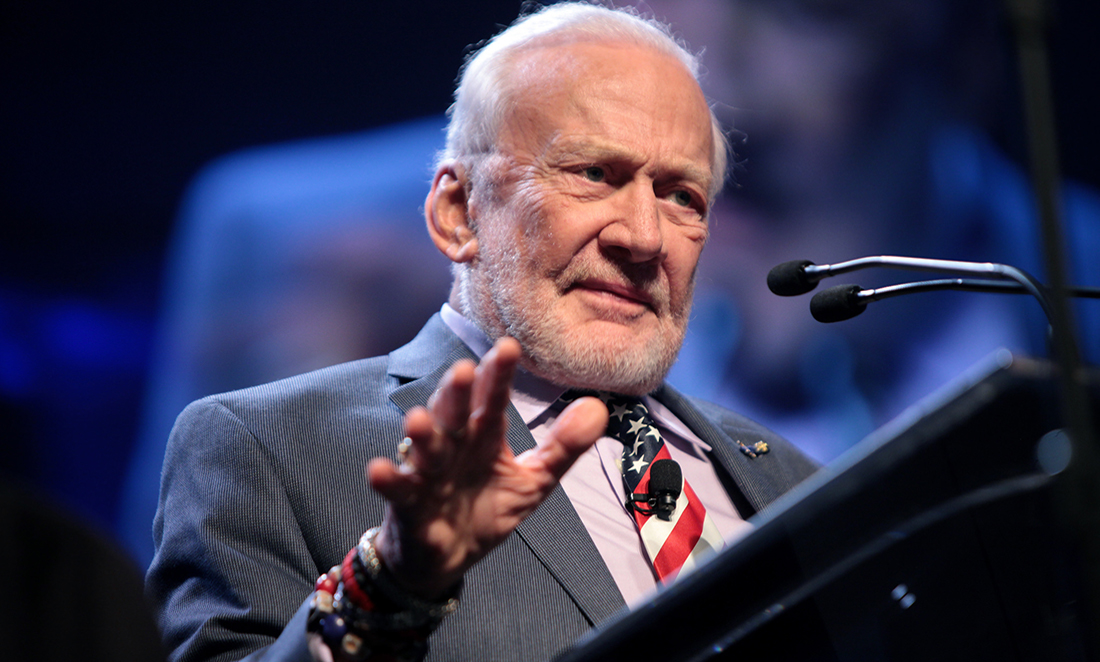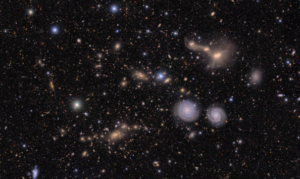Like a little glowing jaffa in the sky, Mars tempts humans.
Rather than a tasty treat, it’s particularly exciting for its potential to house the human race. And sure, people are working on ways to set up camp there. But those settlements will need people to run them. Lots of people, preferably.
Elon Musk predicts that, in the coming 50 years, 1 million people will make the interplanetary move.
With conventional rocketships carrying three to seven people at a time, Elon’s goal currently seems mildly unachievable.
Thankfully, one of the space icons of our time is on the job.
BUZZ TO THE RESCUE
Buzz Aldrin is widely remembered for walking on the Moon—also, moonwalking.
But when he’s kicked the bucket, he doesn’t want his legacy limited to kicking up moon dust.
He’s devised a plan to get humans to Mars that is cheaper and faster than many other proposed methods.
Buzz has also written a book about it, launched an associated fashion line and created a VR experience that will preserve his hologram for future Mars colonisers.
Clearly, the 88-year-old is still wildly energised from all that radiation on the Moon.
Buzz’s plan to get us to the Red Planet may be underscored like a sci-fi epic, but it’s based in real science and even has the tick of approval from scientists at NASA’s Jet Propulsion Laboratory and Purdue University.
CYCLING TO MARS
Buzz has identified that a periodic orbit exists between Mars and Earth.
What this means is that Earth does a lap of the Sun once every 365.256 days. Mars does a lap of the Sun once every 686.93 Earth days. If you overlaid these two orbits with a third orbit, that of a spacecraft, which took 2 and 1/7th years to complete, that spacecraft would periodically meet up with the two planets.
The relative gravitational forces of the two planets mean that, instead of using fuel to change direction, the spacecraft could use gravitational slingshot manoeuvres. This would reduce the cost of each trip, as well as freeing up space on board for more passengers.
So how could we use this to get people to Mars?
1. Astronauts board a spacecraft on Earth and blast off.
2. 5 or so months later, the craft approaches Mars. Using a smaller taxi shuttle, the crew disembarks and lands on the Red Planet. The OG rocket does not actually stop at Mars but uses gravity to continue its orbit.
3. 2 and 1/7th years after launch, the shuttle re-encounters Earth and picks up the next load of people.
4. Repeat indefinitely.
“The Cycler system alters the philosophy behind a Mars program. It makes possible the dream of regular flights to the Red Planet and a permanent human presence there.”
To halve the time it would take to build up a substantial colony on Mars, we could employ a twin-cycler system, meaning that we’d have two craft in orbit at the same time.
Buzz wrote in a Popular Mechanics article that “the Cycler system alters the philosophy behind a Mars program. It makes possible the dream of regular flights to the Red Planet and a permanent human presence there. That’s the only way we’ll ever succeed in taking mankind’s next giant leap: a subway-in-the-sky between our planet and our future second home.”








